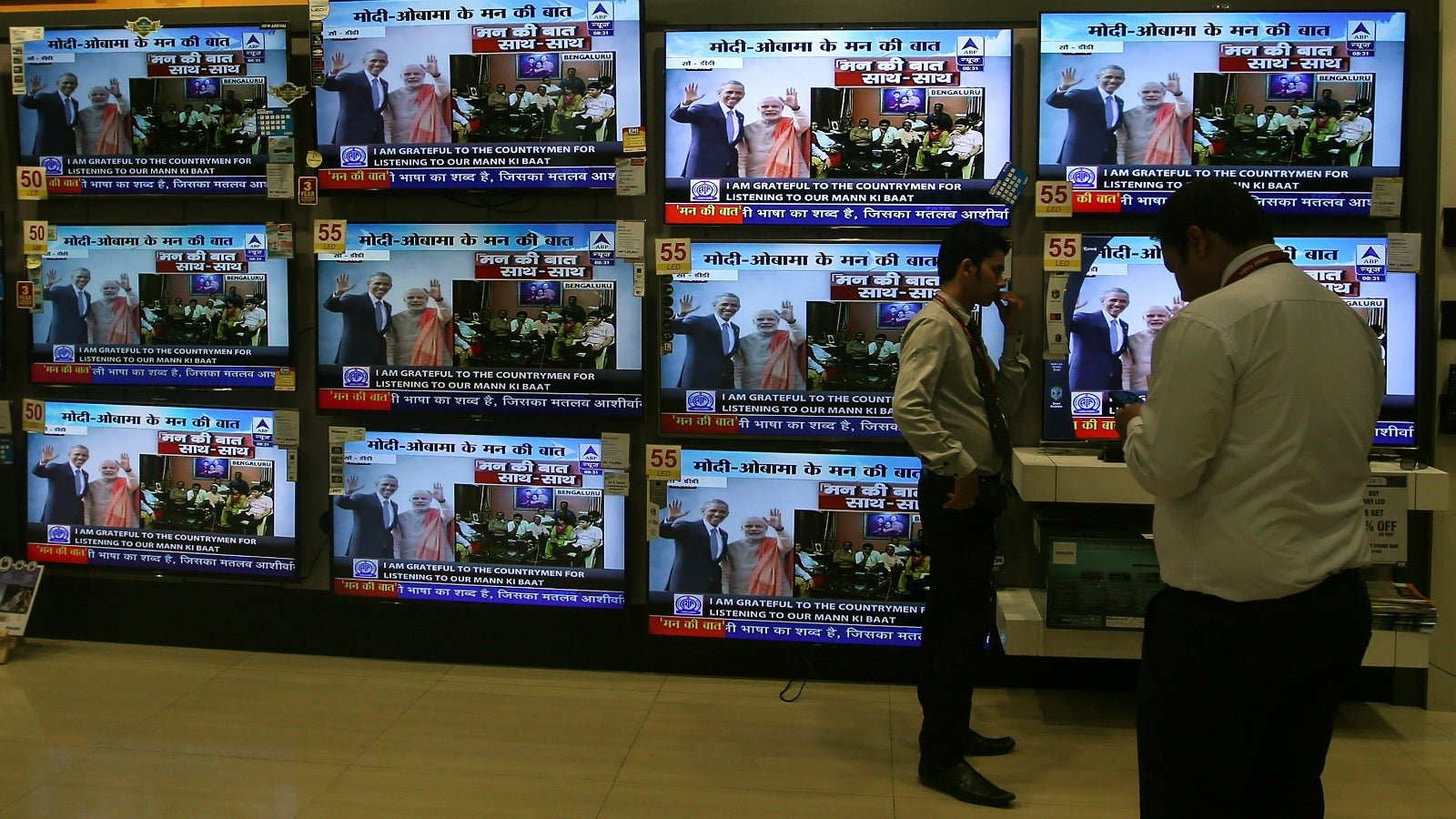Firefighting with fake information: Is the Modi regime creating a new model of governance?
Disinformation may be the newest steroid the Narendra Modi government has discovered to pump up nationalism in India.


Disinformation may be the newest steroid the Narendra Modi government has discovered to pump up nationalism in India.
On several instances in the last few months, senior government officials and representatives of the ruling Bharatiya Janata Party (BJP) have been called out for disseminating embarrassingly wrong information at crucial moments in their desperate attempts to frame the political discourse.
Often these are in the form of morphed photographs and doctored videos, or even quotes from fake Twitter accounts.
It is unclear yet if this is part of a deliberate strategy, but it is hard to miss the consequences of such actions, including the unleashing of nationalist lynch mobs.
Last week, during a television debate on the Jawaharlal Nehru University (JNU)-sedition row that has roiled India, BJP spokesperson Sambit Patra showed a video that purportedly had student leader Kanhaiya Kumar raising secessionist slogans. The voluble Times Now anchor Arnab Goswami, who at first exhorted Patra to show the video, then used it to pound his opponents in the debate.
Within days, though, the video in question was reported to be doctored to incriminate Kumar. Neither Patra, the BJP, nor the government of India has offered any explanation for this apparent sleight of hand. The TV channel has been fumbling over it.
During another heated TV discussion on the same channel, Patra displayed the picture of Indian soldiers during the Kargil war to ratchet up support for the government’s move to hoist the Indian Tricolour in all central university campuses.
Either Patra was himself misled, or he was being too clever by half. The photograph he displayed turned out to be a doctored version of the iconic Iwo Jima photograph, with the US stars and stripes replaced by the Indian Tricolour.
Either way, Patra managed to add another pinch of patriotic nastiness to the country’s political climate.
Meanwhile, India’s home minister, Rajnath Singh, made some serious allegations about the protest at JNU where the alleged anti-India slogans were raised.
“I also want to make it clear that the JNU incident has the support of LeT (Pakistan-based terrorist organisation) chief Hafiz Saeed. We should also understand this reality that Hafiz Saeed has supported this incident and it is extremely unfortunate,” the home minister said on Feb. 14, according to the Indian Express newspaper.
After Singh’s statement flared up tempers on all sides, it was revealed that the minister may have cited a fake Twitter account to make this claim. Soon, Saeed himself was rubbishing it, leaving Singh wiping the egg off his face.
Such ineptness isn’t an exception. Amid the terror attack on the Indian Air Force base in Pathankot, Punjab, the home minister on Jan. 2 tweeted that all the attackers had been neutralised. This came a full day before the operation actually ended and another terrorist was found and killed by security forces. Singh was forced to withdraw the tweet.
So, is there a larger, deliberate pattern emerging?
“All these so-called mistakes are more by design than anything else,” Prodyut Bora, founder of the BJP’s information technology cell, who quit the party in February 2015, told Quartz. “Even if it is not a deliberate strategy, it has a trickle-down effect. It is dangerous when information becomes propaganda.”
Over the years, Indians have gotten used to morphed photographs and emotionally manipulative information on chain mails. These often sought to pump up patriotism by glorifying the country’s real and imagined achievements. It could be something as innocuous, but patently false, as UNESCO’s selection of India’s national anthem as the world’s best, or the NASA satellite picture of a fully lit-up India on Diwali night. Even the Indian government once fell for such a hoax.
In the run-up to the 2014 general elections, the BJP fanbase on social media used many doctored photographs to inflate Modi’s credentials and his work as the Gujarat chief minister. After he became prime minister, even his official media arms tried to do some of that.
In December last year, Modi was ridiculed for a picture of him released by India’s Press Information Bureau (PIB) during the Chennai floods. Although the PIB had jazzed up pictures of dignitaries earlier too, this one stuck out as another example of “photoshop sarkar.”
Some observers, though, feel that Indian social media, given its anarchic nature, has increasingly begun to overreact.
“All heavy users of social media have at some time or the other been inadvertently taken in by content that was later found to be dubious,” said Shashi Shekhar, CEO of Niti Digital, a media and technology firm. “I would give the home minister and the BJP spokesperson the benefit of doubt.”
Shekhar knows a thing or two about the BJP’s social media history. After all, he led its internet and social media campaign in the run-up to the 2014 elections under “Mission 272+.” BJP spokespersons could not be reached for this report despite several attempts.
The opposition parties obviously do not intend to give the government or the BJP any leeway.
“This is clearly an example of immature governance. And I certainly feel what they are doing is part of a deliberate design,” said Shakeel Ahmed Khan, an all-India secretary of the Congress party. “The government doesn’t realise that once in power, you are all of India’s government, not just the party’s.”
Bora, the former BJP IT cell chief, put it differently: A political party or leader has room to overstate things or even over-promise. But not after assuming office.
“That is being over-the-top,” Bora said. “This is closer to forgery.”
We welcome your comments at [email protected].